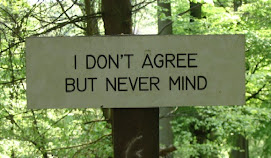Crashes at junctions are a constant feature of motorcycle crash statisitics. Despite all the 'advances' in conspicuity - daytime lights (initially voluntary, now almost mandatory as all new bikes are fitted with AHO - Automatic Headlamp On), and fluorescent clothing - there are probably as many of these crashes now (in terms of the %age of all bike crashes) as there have ever been.
I say 'probably' because it's difficult to get accurate figures of 'through the ages' bike crashes which give a breakdown of crash types which is easily comparable.
However, these crashes, where a vehicle either pulls out of a side road in to the path of a bike, or an oncoming vehicle turns across the bike's path, are known by two names, one technical, the other from grim experience:
RoWV - Right of Way Violation
SMIDSY - from the driver's usual apology to a prone rider: "Sorry, Mate, I didn't see you". Such a well-known phrase for riders that a BBC TV motorcycling series (and accompanying book) used the phrase for its title (and theme song!).
There are many reasons why these crashes happen, and many possible, well, not 'cures', many options the rider has to reduce the likelyhood of them happening, and reduce the severity of the outcome if they do happen.
But perhaps the first, most important, thing to establish is the difference between blame (or responsibility), and outcome. Although these crashes may be the 'fault' of the driver, and they have the responsibility to not pull out, it's usually the rider who suffers. So, rightly or wrongly, it's the rider who has to shoulder a lot of the responsibility for avoiding the crash in the first place, rather than seeking redress through insurance or courts.
So what action can the rider take?
Well, there's another term used when describing these crashes: 'Conspicuity' crashes - because the driver usually claims they haven't seen the bike and rider. This neatly side-steps the issue of actually checking and being responsible for not pulling out, by turning the blame on to the rider for not being conspicuous enough.
Quite simply, riders are often approaching these junctions in the worst possible 'way' for being seen, ny travelling almost head-on to the driver, and this means they're easily hidden - by door pillars, signs and other 'street furniture', and smudges or dirt on the cars windscreen. There are other issues too, like the driver's eyes blind spot (towards the right of the right eye) and reducing peripheral vision in older drivers.
But the 'head on' problem is worse because the rider stays 'stationary' against the background, and only slowly increases in size (known to psychologists as 'looming').
Also, a lot of bike gear and bike colour schemes do a great job of camouflaging the bike by breaking up its outline. There is no one colour scheme which will guarantee conspicuity - the rider can't control their background.
There is another human limitation, that of what the eye and brain can actually 'see'.
So "Z Line" will give more detail on this.
.
Sunday, 24 August 2008
Subscribe to:
Post Comments (Atom)





2 comments:
Hi Malcolm.
I have read your Z-line section with interest...thanks.
I am curious, though, if any research has been done about the problems of a person, seeing an approaching motorcycle head on, trying to estimate its speed, is it easier or harder with the Headlight switched on during daylight hours?
I know, personally, that it seems harder to me to pick the speed of an approaching motorbike, if all I have to "see" is a very bright light.
I'm pretty sure it was Malc that gave me this info in the first place, or Kevin, either way, you may find it useful:
from Shaw, 1979
Compared the accuracy with which subjects estimated the speed of a motorcycle with headlamp on, and off.
Subjects over-estimated the speed for lower speed of approach
Subjects under-estimated the speed for higher speed of approach
The reversal from over- to under- took place between 50-55mph with the headlamp off, and between 35-40mph with the headlamp on.
Post a Comment